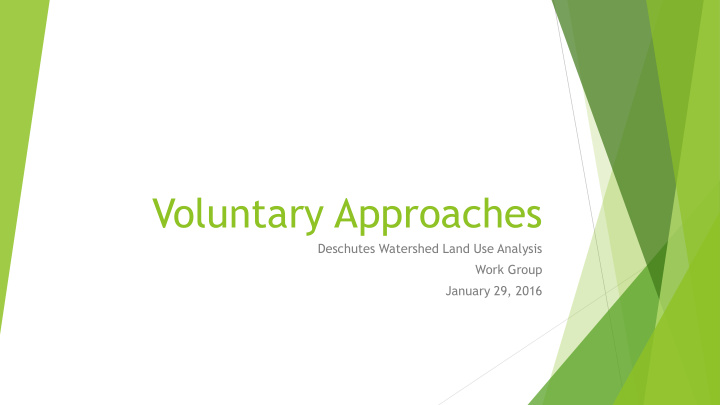



Voluntary Approaches Deschutes Watershed Land Use Analysis Work Group January 29, 2016
Conservation Tools Voluntary Acquisition Fee simple purchase Conservation Easements Purchase of development rights Likely Changes Increased funding for conservation
Conservation Tools Transfer of Development Rights Likely Changes Expand to include ecologically important areas, collaborate with cities www.thurstoncd.com
Conservation Tools Financial incentives Low cost loans or grants Open space tax program Current use tax Voluntary Stewardship Program Potential Tools Payments for Ecosystem Services Clean water Carbon sequestration Likely Changes Increased funding for programs
Restoring Degraded Areas Collaboration with landowners Revegetation Removal of shoreline armoring and fish barriers Engineering stream channels and large wood Financial compensation (i.e. CREP) Partnerships Diverse interest groups and organizations Likely Changes www.thurstoncd.com Increased funding for restoration
Priority Areas Focus on areas identified for protection or conservation, and restoration that are upstream of an area identified for protection (zones 1, 2, and 3), and Spurgeon Creek
Education and Outreach Providing information to residents of the watershed Activities that can improve water quality and wildlife habitat Picking up pet waste Maintaining existing trees Participation in restoration activities Rain gardens and water-wise gardening Providing wildlife habitat Food Water Cover Places to raise young Likely Changes Increased funding www.wsu.edu
Recommend
More recommend